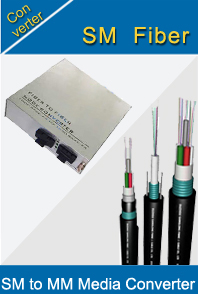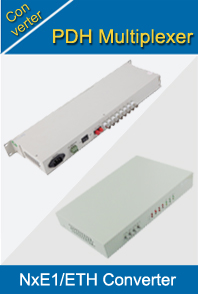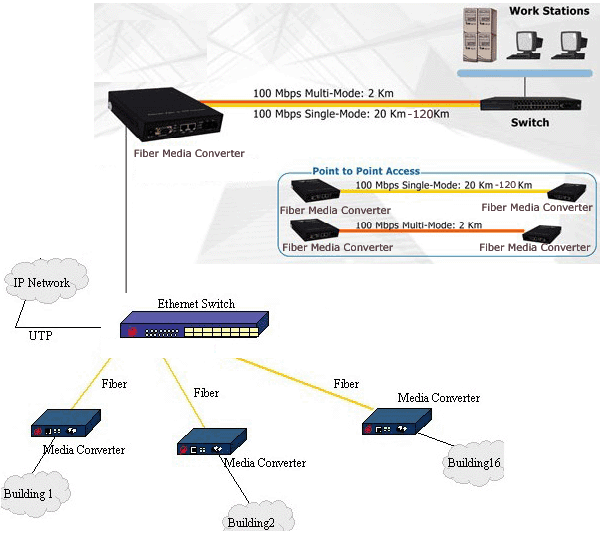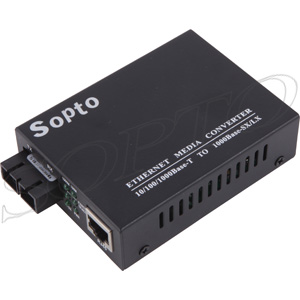-

- Sopto Home
-

- Special Topic
-

- Converter Knowledge
-

- Network Interface Cards and Media Converters in Networking Proce
Converter Knowledge
- Form Factors and Application of Ethernet Media Converter
- Ethernet over 4 E1 Converter Brief Introduction
- What is the Difference between RS232 and RS485 Serial Interfaces
- What is the Difference between RS232 and RS485 Serial Interfaces
- How to Convert an Analog Telephone to VoIP Protocol?
- How to Find the Internet Protocol Address and Media Access Contr
- How to Convert from Fast Ethernet to Fiber Optics?
- How to Connect a Fiber Converter?
- How to Convert Ethernet to Fiber Media Converters?
SOPTO Special Topic
Certificate



Guarantee
Except products belongs to Bargain Shop section, all products are warranted by SOPTO only to purchasers for resale or for use in business or original equipment manufacturer, against defects in workmanship or materials under normal use (consumables, normal tear and wear excluded) for one year after date of purchase from SOPTO, unless otherwise stated...
Return Policies
Defective products will be accepted for exchange, at our discretion, within 14 days from receipt. Buyer might be requested to return the defective products to SOPTO for verification or authorized service location, as SOPTO designated, shipping costs prepaid. .....
Applications
An Ethernet to Fiber Media Converter can also be used where there is high level of electromagnetic interference or EMI which is a common phenomenon found in industrial plants. This interference can cause corruption of data over copper-based ethernet links. Data transmitted over fiber optic cable however is completely immune to this type of noise. An Ethernet to Fiber Optic Converter therefore enables you to inter-connect your copper-ethernet devices over fiber ensuring optimal data transmission across the plant floor.
SOPTO Products
- Fiber Optic Transceiver Module
- High Speed Cable
- Fiber Optical Cable
- Fiber Optical Patch Cords
- Splitter CWDM DWDM
- PON Solution
- FTTH Box ODF Closure
- PCI-E Network Card
- Network Cables
- Fiber Optical Adapter
- Fiber Optical Attenuator
- Fiber Media Converter
- PDH Multiplexers
- Protocol Converter
- Digital Video Multiplexer
- Fiber Optical Tools
- Compatible
Related Products
Performance Feature
Converter Knowledge
Recommended


Network Interface Cards and Media Converters in Networking Process
Network Interface Cards
A network interface card (NIC), also called network card for short, is the full component installed in a computer, or a network device such as a printer or label maker, that allows the device to communicate over the network. Most of this card is situated inside the computer or other device. What is visible to the user is the workstation port.
NICs are both an Open Systems Interconnection (OSI) Layer 1 (Physical layer) and Layer 2 (Data Link layer) component since they provide access to the network and have a unique address. Since most network operate using Ethernet applications, most network interface cards are based Ethernet. Every Ethernet NIC has a unique 48-bit serial number called a MAC address. Every computer or other network device on an Ethernet network must have a card with a unique MAC address to communicate on the network.
Network cards can either be in the form of an expression card that plugs into a computer PCI bus, or be built in directly on the motherboard of the computer or other network device. Most new computers have a network interface card built directly into the motherboard. Copper-based 10 Base-T and 100 Base-TX network interface cards, or varieties that auto-negotiate between 10, 100, and 1000Mbps, are the most common NICs installed in computers today because of their very low prices.
Network interface cards are also available with fiber-optic connections to support optical based applications. The visible portion of a NIC has optical ports that would be connected using a fiber-optic cable with ST, SC, or LC connectors. The optical signal is converted to electrical on this board and then passed through to the computer bus. Optical NICs are less common in computers in commercial building networks because of their high cost relative to copper-based NICs. Prices of 100 Base-FX(100Mbps) NICs range from 100 dollars to 140 dollars.
Media Converters
Media converters allow cost-effective conversion of signals from one cabling media type to another. The most common type converts signals running over copper UTP cabling to fiber-optic cabling. Media converters also exist to support conversion of coax cable to UTP cable or fiber-optic cabling.
Media converters are application specific. For example, you would need an Ethernet converter to convert 1000 Base-T to 1000 Based-SX. Media converters do not convert one application protocol another, such as Token Ring to Ethernet. However, within any one of these applications and more, media converters exist to convert from one cabling media to another.
10M/100M/1000M Gigabit Ethernet Media Converter
Media converters typically come in a stand-alone device. However, they can also be ordered in a multi-port model, similar to a workgroup switch, or in a modular chassis. A media converter has two connections: one for cabling media type and the other for the other media type. One of the more common Ethernet media converters converts an Ethernet an Ethernet signal over copper UTP cabling to an optical signal. The front plate has an RJ-45 connection for the UTP cabling and an optical connection. Optical connections can come in a variety of types. Media converters are also available with a pluggable optical GBIC (Gigabit Ethernet interface converter).
As LAN networks grow and expand beyond the original plants of a commercial building or campus, workstation are often placed in locations beyond the reach of UTP copper cabling. Since the copper cabling cannot support a distance long enough to connect these devices to the network, IT managers are faced with a choice. They can add an additional telecommunications room near this new set of users and run a fiber-optic cable back to the main equipment room; alternatively, they can run fiber-optic cable directly to the desk. An IT manager can buy a new workgroup switch with a fiber-optic cable uplink or use media converters. Media converters become and closet would be inefficient and cost prohibitive. (Keep in mind that these installations would not be covered by the standards and should be considered temporary).
Sopto supplies high quality fiber media converters, like 10G Media Converter, PSE Media Converter and so on. For the newest quotes, please contact a Sopto representative by calling 86-755-36946668, or by sending an email to info@sopto.com. For more info, please browse our website.





.jpg)
